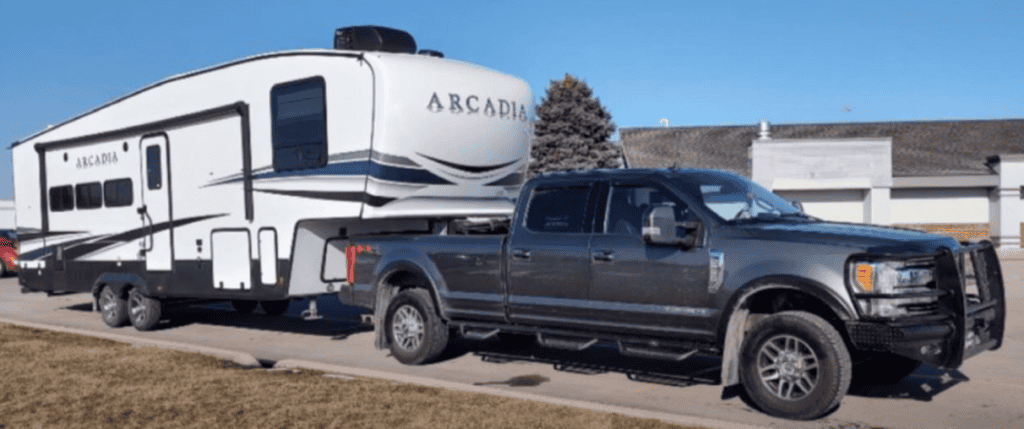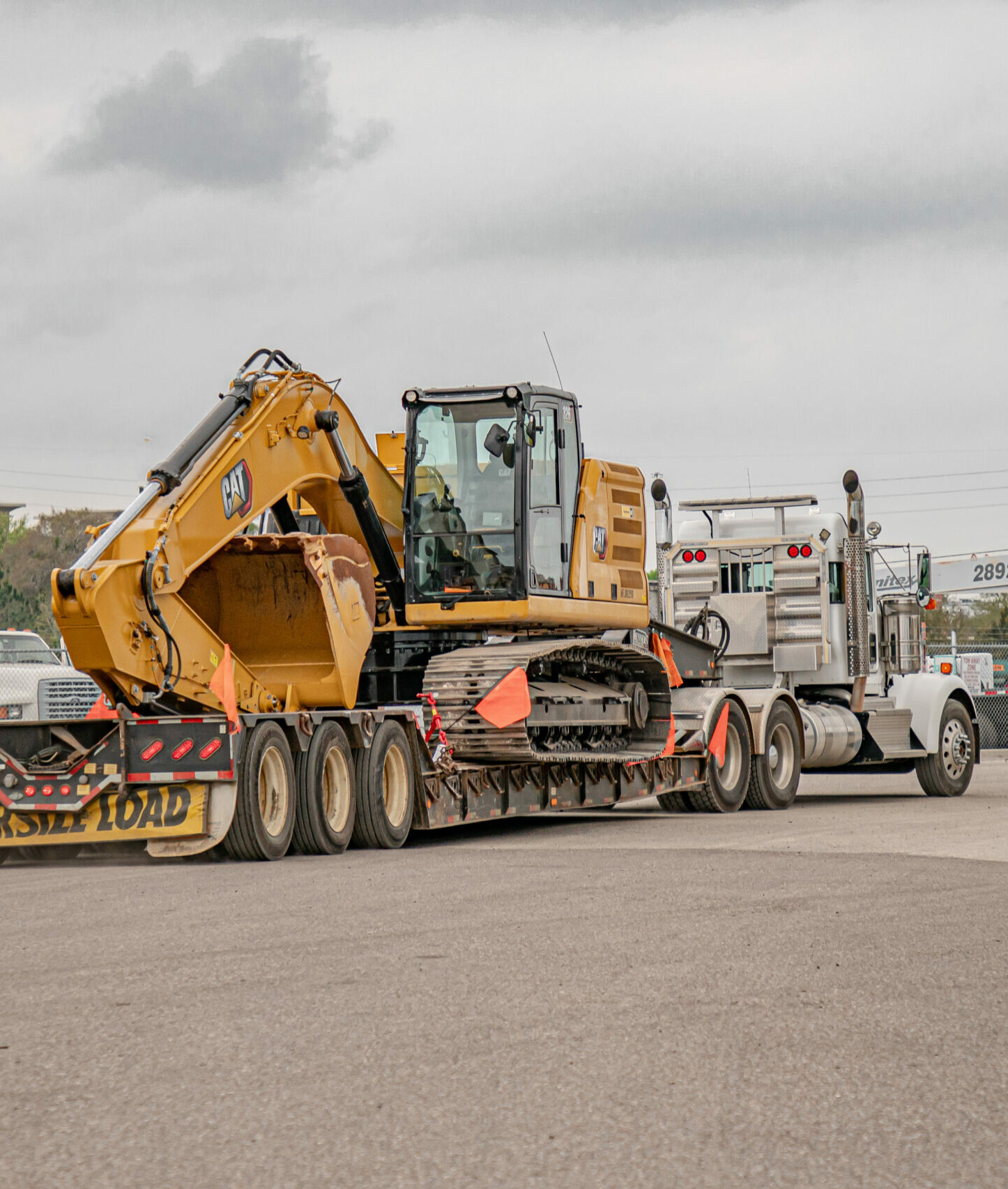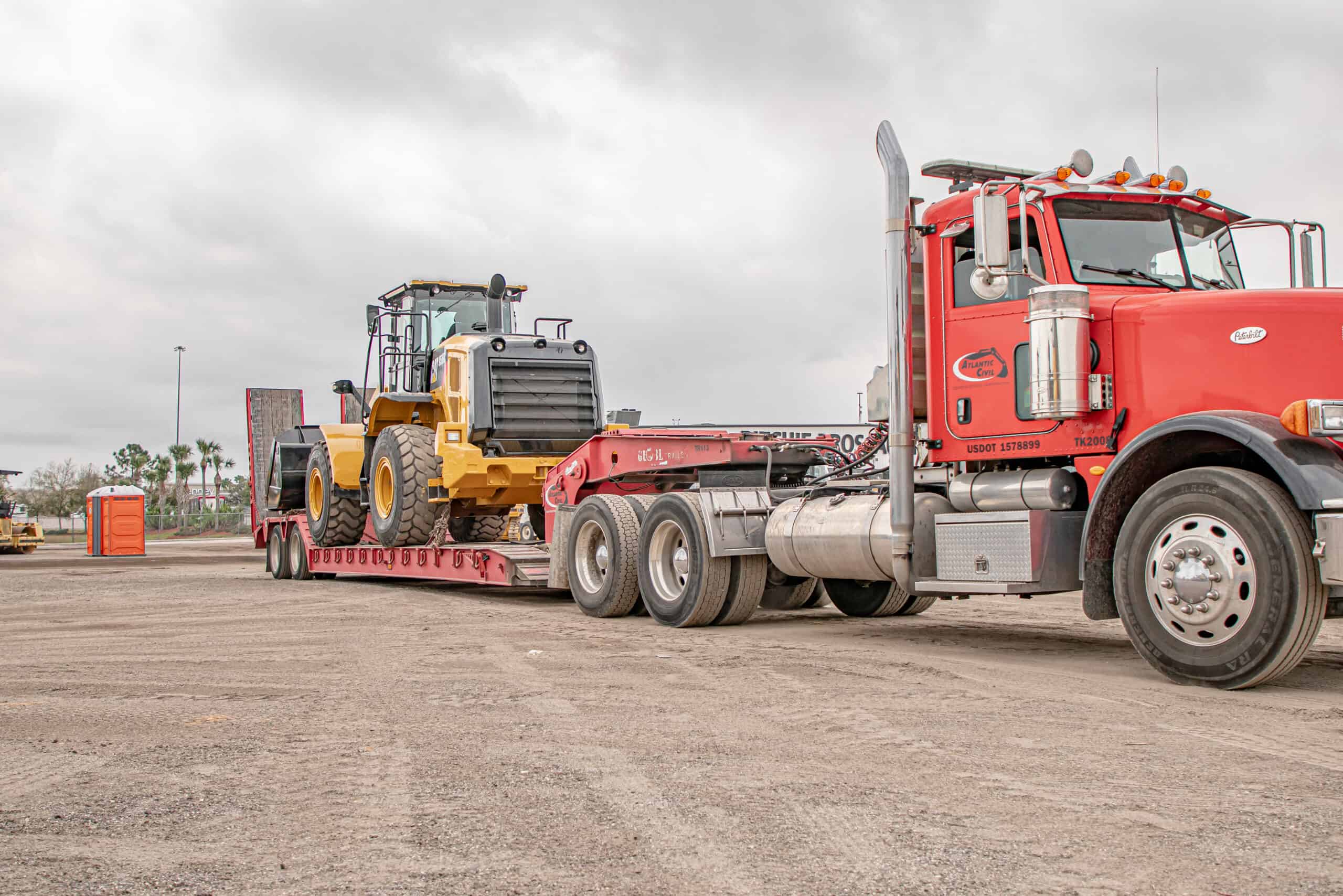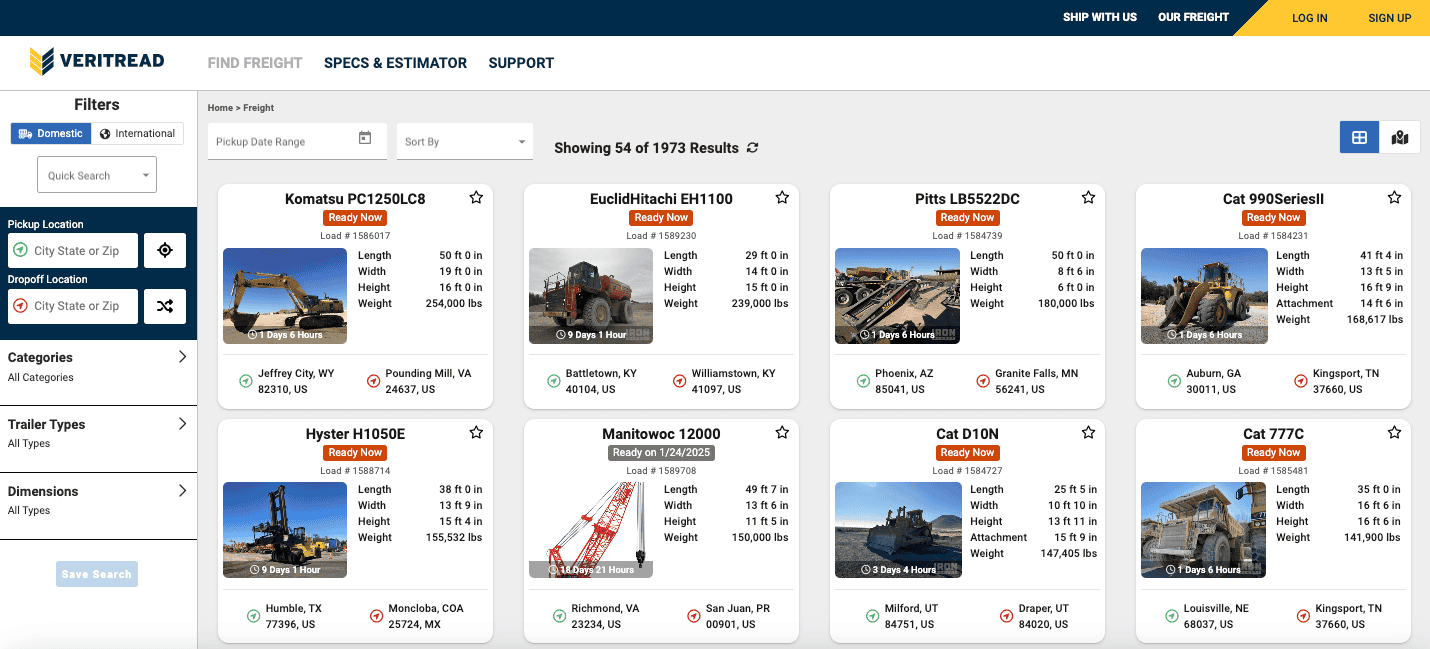Preparing Your RV for Long-Distance Hauling

Having to prepare your RV for long-distance travel can be a big deal, especially if it’s your first time. Whether you’re relocating across the country or heading to a new campsite, preparing your RV for transport is crucial. Unlike driving your car, RVs require extra care to ensure a safe and damage-free journey. This comprehensive guide will equip you with the knowledge and steps necessary to prepare your RV for transport, giving you peace of mind and a smooth journey.
Outline:
- What Essential Maintenance Tasks Should be Performed Before RV Transport?
- How Do I Protect Sensitive RV Components, Such as Awnings and Antennas, During Transport?
- What Precautions Should be Taken to Secure Items Inside the RV Before Transport?
- How Do I Properly Disconnect Utilities and Systems for RV Transport?
- Are There Any Special Considerations for Winterizing an RV Before Long-Distance Transport?
What Essential Maintenance Tasks Should be Performed Before RV Transport?
- Tires: Check the tire pressure and condition of all tires, including the spare. Make sure the pressure is inflated to the manufacturer’s recommended PSI for hauling a load. Look for any signs of wear, cracking, or dry rot. If you find any damage, replace the tire before transporting the RV.
- Brakes: Have the brakes inspected to ensure they are in good working order. This includes checking the brake pads/shoes for wear, the brake fluid level, and the overall condition of the braking system.
- Lights: Check all exterior lights, including headlights, taillights, brake lights, turn signals, and clearance lights. Make sure they are all functioning properly.
- Battery: Check the battery connections for corrosion and ensure the battery is securely fastened. You may also want to have the battery tested to ensure it has enough power for the trip.
- Exterior: Give the RV a thorough inspection for any loose or damaged parts on the exterior. This includes checking the roof, awnings, doors, windows, and bumpers. Tighten any loose screws or bolts, and repair any damaged parts.
- Interior: Inspect the interior of the RV for any loose furniture or belongings. Securely fasten any cabinets, drawers, and other storage compartments.
- Disconnect Utilities: Disconnect any utilities from the RV, such as propane tanks, water hoses, and electrical cords.
How Do I Protect Sensitive RV Components, Such as Awnings and Antennas, During Transport?
Here are some ways to protect sensitive RV components during transport:
Awnings:
- Retract the awning completely: This is the most important step, as a deployed awning will catch wind and can easily be ripped off during transport.
- Use a protective awning cover: These are typically made from a breathable, weatherproof material and secure to the awning with straps or ties. They shield the awning from road debris, dirt, and UV rays.
- Reinforce awning arms: If possible, use straps or bungee cords to secure the awning arms to the RV body. This will help to prevent them from bouncing around during transport.
Antennas:
- Remove antennas if possible: This is the safest option, especially for tall or fragile antennas like satellite dishes.
- Lower and secure antennas that cannot be removed: If removing the antenna isn’t an option, lower it completely and secure it to the RV body with straps or bungee cords. You can also wrap the antenna with padding material for additional protection.
Additional Tips:
- Use caution with tape: While tape can be tempting to secure components, vibrations during transport can loosen it and potentially damage the surface underneath. If you must use tape, choose a painters tape that is less likely to leave residue.
- Communicate with the hotshot driver: Let them know about any protruding components and ask about their usual securing methods for such items.
- Consider professional transport: If you’re uneasy about transporting the RV yourself, some hotshot companies may offer additional securing services for sensitive components.
By following these steps, you can minimize the risk of damage to your awnings, antennas, and other sensitive components during RV transport.
What Precautions Should be Taken to Secure Items Inside the RV Before Transport?
To prevent your RV belongings from becoming a projectile during transport, here are some precautions to secure items inside before hauling:
- Empty unnecessary items: The less stuff you have inside, the less that can move around and potentially break. Consider taking out anything you won’t need at your destination and storing it elsewhere.
- Consolidate and pack tightly: Fill drawers and cabinets to capacity, but not overflowing. Use towels, blankets, or pool noodles to fill any empty spaces and prevent items from shifting.
- Lock latches: If your cabinets and drawers have latches, make sure they are all securely locked to prevent them from popping open during transit.
- Add cabinet locks: If your cabinets lack locks, consider installing temporary adhesive or magnetic locks for added security.
- Remove small appliances: If possible, take out countertop appliances like toasters, coffee makers, and blenders. If they must stay inside, secure them on the floor with bungee cords or ratchet straps.
- Secure larger appliances: For larger appliances like refrigerators and microwaves, use furniture straps or turnbuckles to anchor them to the wall or floor studs.
- Break down furniture: If possible, break down tables and chairs to take up less space and prevent them from tipping over. Secure them together with straps or bungee cords.
- Use furniture tie-downs: Anchor furniture directly to the floor using furniture tie-down straps with D-rings that screw into the floor.
- Pack loose items in boxes: Pack loose items like books, dishes, and toiletries in sturdy boxes or bins. Fill any empty spaces with packing peanuts or towels to prevent them from rattling around.
- Use tension rods: Tension rods mounted across cabinet shelves or the refrigerator can help prevent items like dishes or canned goods from falling out.
How Do I Properly Disconnect Utilities and Systems for RV Transport?
Disconnecting utilities and systems from your RV before transport is crucial to ensure safety and prevent damage during the trip. Here’s a breakdown on how to properly handle each:
Propane:
- Turn off the propane supply valve: Locate the main propane shut-off valve, typically situated near the propane tank itself or on the regulator. Turn the valve clockwise until it’s completely shut.
- Close individual appliance valves: For added safety, close the individual shut-off valves on each propane appliance within the RV (stove, oven, water heater).
Water:
- Drain the fresh water tank: Locate the fresh water tank drain valve, usually found on the underside of the RV. Open the valve completely and allow all the water to drain out. You may need to level the RV slightly to ensure complete drainage.
- Disconnect city water hose: If you’re connected to a city water source, detach the hose from the RV’s city water inlet.
Electrical:
- Disconnect from shore power: If you’re plugged into an external power source, unplug the electrical cord from the RV’s shore power inlet.
- Disconnect batteries (Optional): In some cases, especially for long-distance transport, you might want to consider disconnecting the RV’s batteries. This can help prevent them from draining during transport and minimize the risk of electrical issues. Consult your RV manual for proper battery disconnection procedures.
Sewer:
- Empty the sewage holding tank: Ensure the black and grey water tanks are completely emptied and cleaned before transport. You can dump them at a designated RV dump station.
- Close the sewer drain valves: Once emptied, close the drain valves on both the black and grey water tanks securely.
By following these steps and referring to your RV manual, you can ensure all utilities and systems are properly disconnected and secured for safe transport of your RV.
Are There Any Special Considerations for Winterizing an RV Before Long-Distance Transport?
There isn’t a separate process for winterizing an RV specifically for long-distance transport. However, the cold temperatures you might encounter during transport at certain times of year reinforce the importance of a thorough winterization to prevent damage from freezing pipes and cracked components. Here’s what to consider:
- Blowing Out Water Lines: While optional during standard winterization, blowing out the water lines with compressed air is highly recommended for long-distance transport in cold weather. This removes any residual water that standard draining might miss and minimizes the risk of freezing and pipe damage.
- Insulate Exposed Pipes (Optional): For extra protection in very cold climates, consider using pipe insulation around exposed water lines underneath the RV. This can provide additional defense against freezing temperatures during transport.
- Inspect for Leaks: Before winterizing and transport, ensure there are no leaks in your plumbing system. Fix any leaks you find to prevent water from accumulating and potentially freezing during transport.
- Monitor Temperatures During Transport (Optional): If possible, communicate with the hotshot driver and monitor inside RV temperatures during transport, especially if the weather is very cold. This allows intervention if freezing temperatures occur within the RV.
By following these recommendations along with a standard winterization procedure, you can significantly reduce the risk of water damage to your RV during long-distance transport in cold weather.
Making Informed Decisions When Shipping Your RV
Shipping your RV can be an intimidating process, but with the right knowledge and preparation you can ensure a successful delivery. Understanding freight costs, researching carriers carefully, preparing your vehicle for transport, selecting appropriate insurance coverage and finding reliable shippers are all important steps to take when shipping your RV. By following these tips outlined in this article, you will have peace of mind knowing that you’ve made informed decisions during the entire process. If you have questions contact us at (800) 880-0468 or (863) 226-0903 and let our team of experts help you with your transport needs. With VeriTread’s vetted and experienced carriers, listing your shipment is easy and hassle-free. So don’t wait any longer – get started today!
veritread products
Top Articles
Freight Types
recent posts

Basic Tips of Heavy Equipment Transport

Understanding Equipment Transport Services


